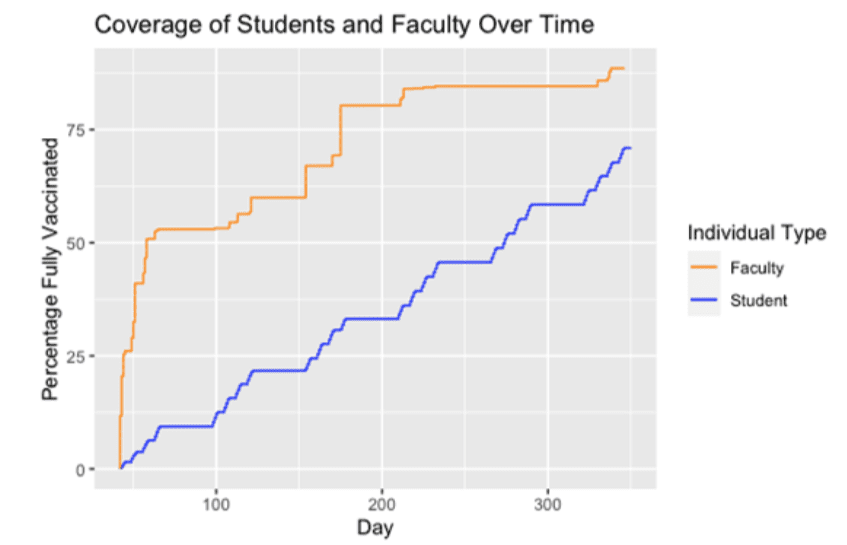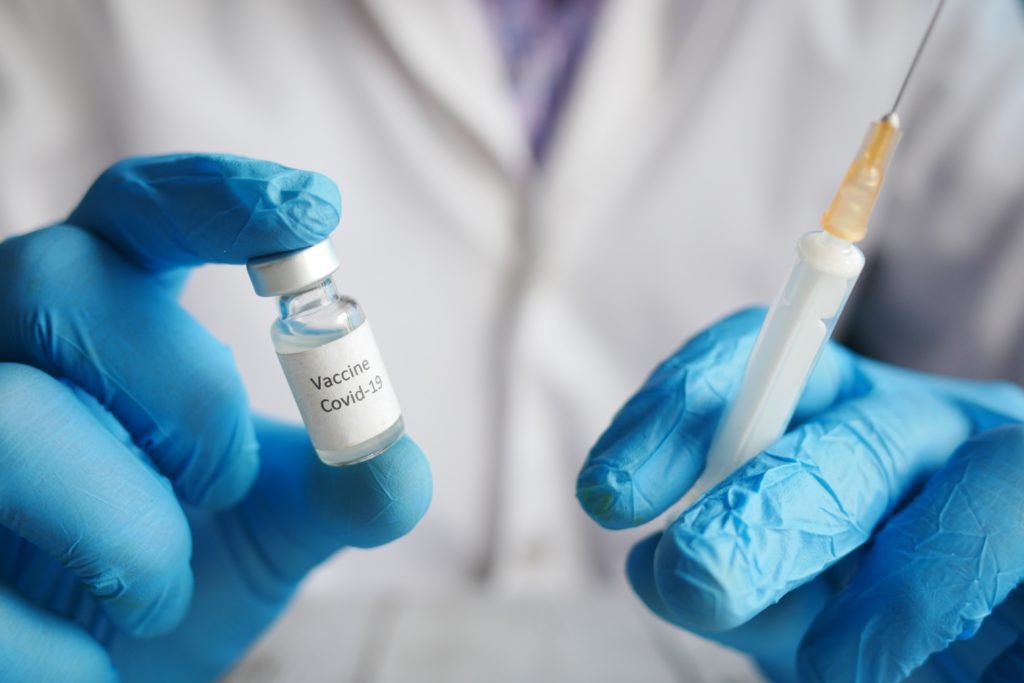Our Team
Our multi-disciplinary team consists of one industrial engineering student and one computer science student, advised by Professor Mohamed Awwad.

Kyle Pearson
Undergraduate Researcher
Kyle Pearson is a fourth year Industrial Engineering student pursuing a M.S. in Engineering Management from Cal Poly. For this project, Kyle assisted in developing the mathematical optimization model and was the main editor of the research paper. Kyle also worked on the data visualizations of the experiment.
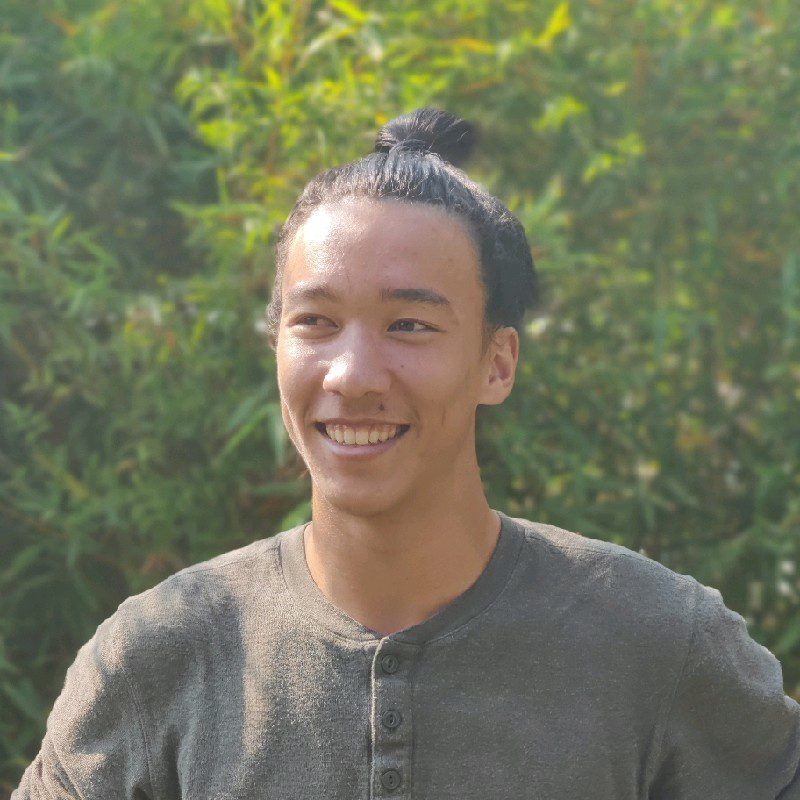
Calvin Brown
Undergraduate researcher
Calvin Brown is a fourth year student pursuing a B.S. in Computer Science. Calvin was primarily involved in implementing the mathematical model and algorithm in code for this project. Calvin also generated the test scenarios, ran the experiments and collaborated on the paper.
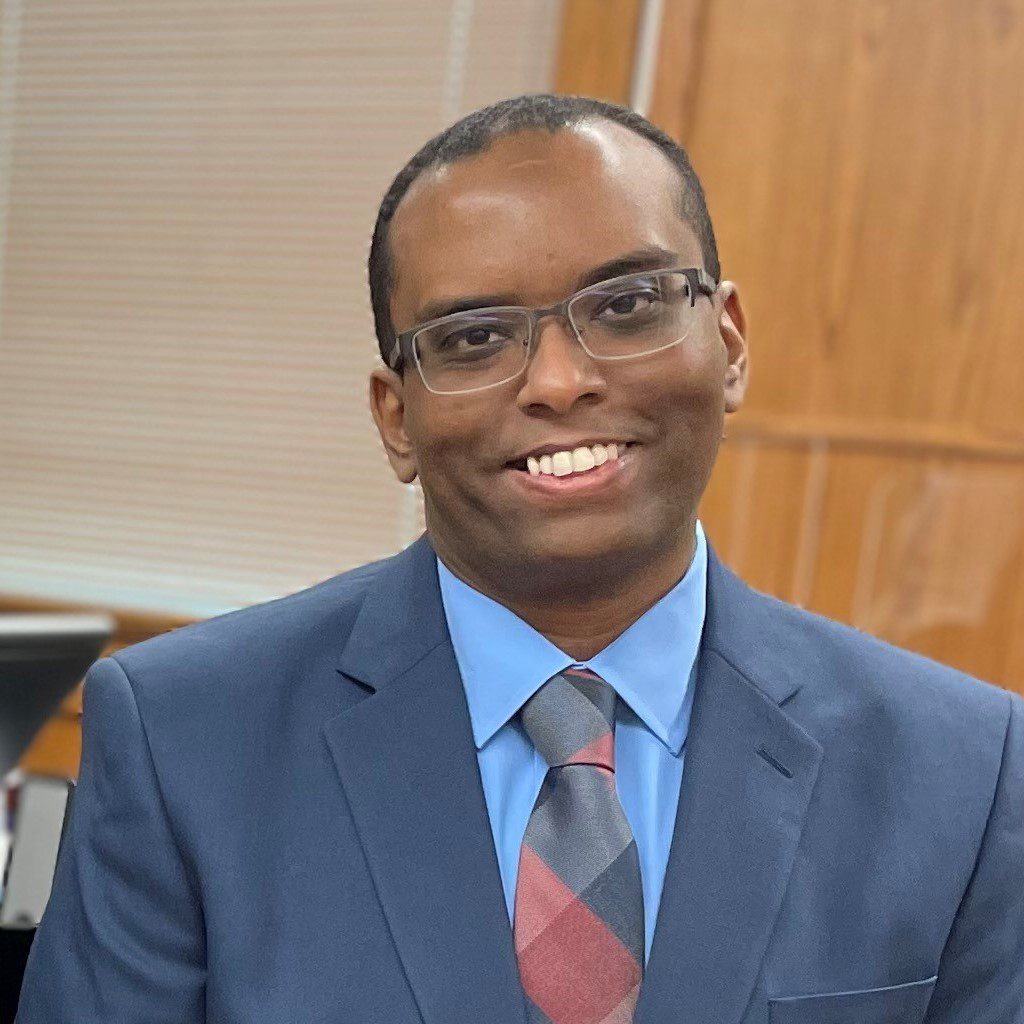
Mohamed Awwad
Project Advisor
Mohamed Awwad is an Assistant Professor in the Department of Industrial and Manufacturing Engineering at Cal Poly – SLO. He received his Ph.D. and M.S. degrees in Industrial Engineering from the University of Central Florida. Before joining Cal Poly, Dr. Awwad held several teaching and research positions at SUNY Buffalo, the University of Missouri, Florida Polytechnic University, and UCF. His research and teaching interests include applied operations research, logistics & supply chain, and blockchain technology.
Acknowledgements
We would like to thank our project advisor Dr. Mohamed Awwad for his guidance throughout our project.
We also thank Cal Poly’s Officee of Student Research for sponsoring our SURP project.
Project Demo
Our Project's Digital Poster
Introduction
Abstract
Vaccination is considered the main breakthrough in the fight against the COVID-19 pandemic. COVID-19 has restricted many college students from vital in-person instruction, and as the supply of vaccines increases, distributing the vaccines to college students will be a top priority for universities around the world. A decision support system (DSS) was created to assist decision makers at college campuses around the world in order to effectively prevent the spread of infection, reduce COVID-19 mortality, minimize wasted vaccines, and ease restrictions relating to the disease.
Methodology
The DSS consists of two stages: risk assessment and vaccine allocation. The risk assessment stage takes into account medical factors and also college-specific factors to create an overall risk score. A mixed integer linear program (MILP) was created for both one-dose and two-dose regimens. A greedy algorithm-based solution approach was created, which solves problems single and two-dose vaccine allocation problems to or near optimality in a matter of seconds.
Stage 1: Risk Assessment
Individuals will be given a contact and medical score, which together create an overall risk score to be used as an input to the mathematical model or greedy algorithm.
Medical scores are given based on eight health factors deemed higher risk by literature.
Contact scores are given based on five residential college specific factors, such as being enrolled in in-person classes or extracurriculars that increase the risk of transmitting COVID-19.
Medical Factors

Contact Factors


Stage 2: Vaccine Allocation
Mixed Integer Linear Program
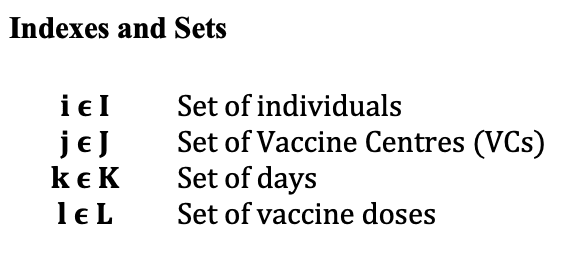
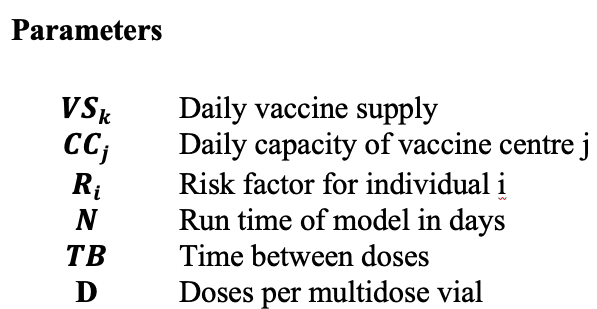

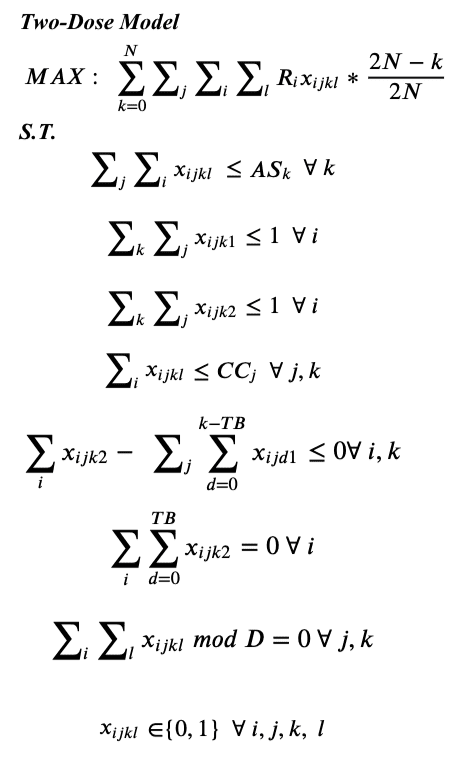
Greedy Algorithm
In very large cases, the mathematical model may not finish in a reasonable time thus a greedy algorithm was developed to find optimal or near-optimal solutions in a matter of seconds.
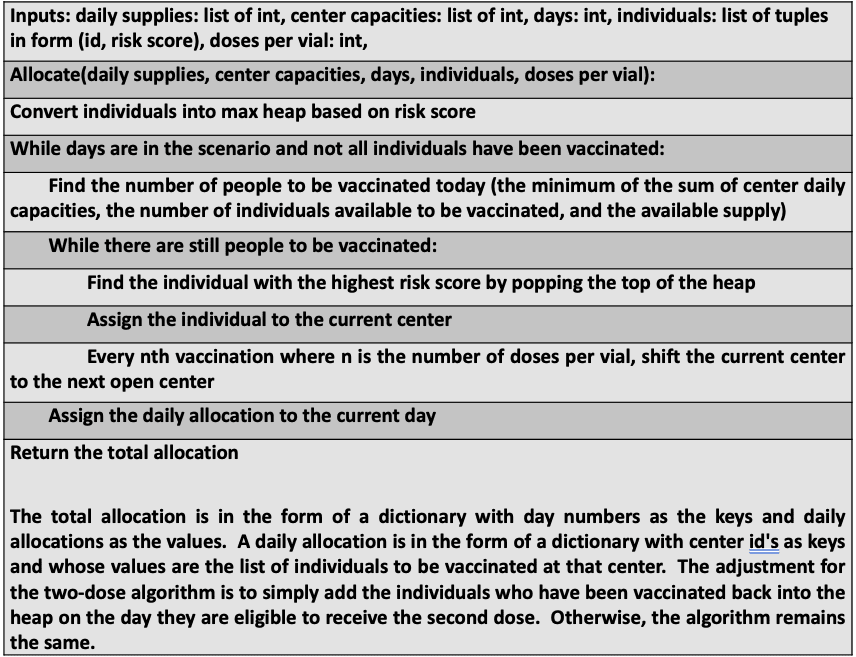

This project is sponsored by Cal Poly's Office of Student Research
Experimentation
To test the system, experimental datasets including both student and faculty populations were generated using realistic parameters to simulate residential college campuses. The greedy algorithm consistently found an optimal or near-optimal solution much faster than the mathematical model and was able to solve the problems, where the model ran out of computer memory.
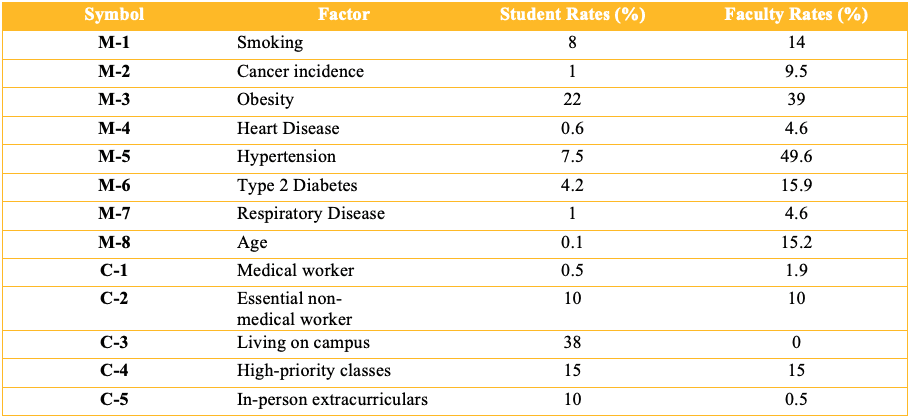
Results
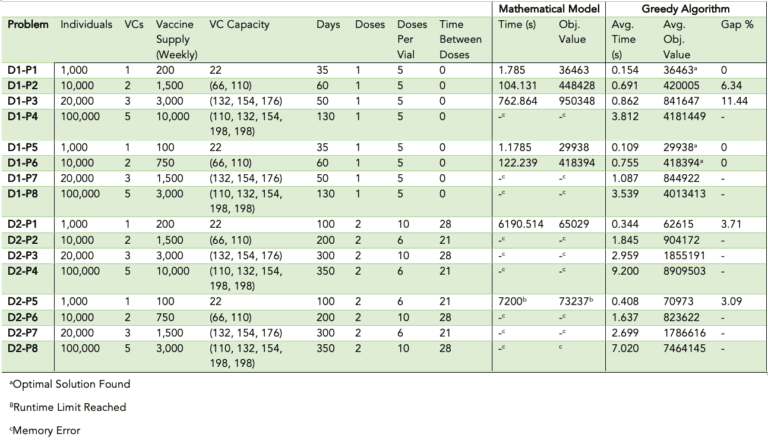
D2-P8 is the largest and most complex problem of the experiments, with a population of 100,000 individuals on a two-dose regimen with at least 21 days between doses in a vaccine shortage. The visual below shows the percentage of students and faculty fully vaccinated over the 350 days of the scenario. The mathematical model ran into a memory error but the algoithm was able to find a near optimal solution in 7.020 seconds.
At the end of the 350 days…
- 88.6% of faculty fully vaccinated
- 70.94% of students fully vaccinated
- 11.4% of faculty partially vaccinated
- 5.7% of students partially vaccinated
